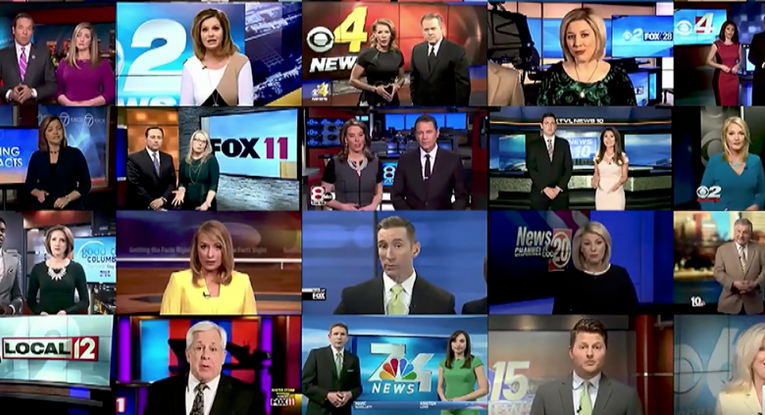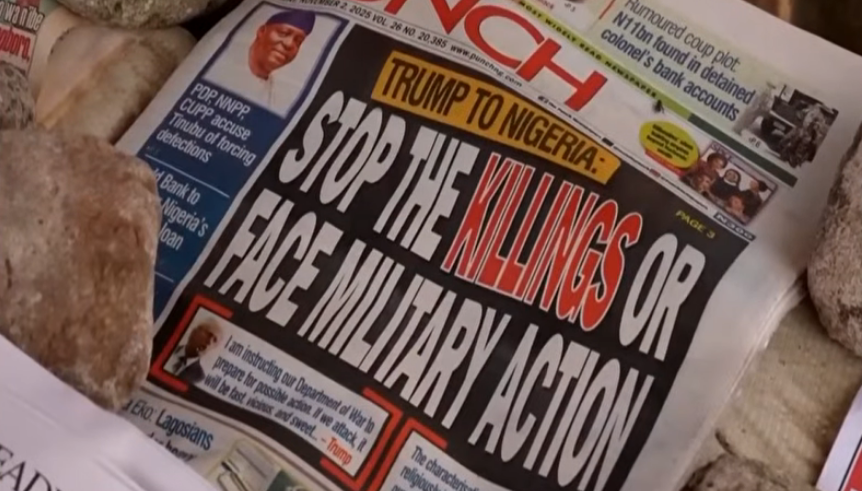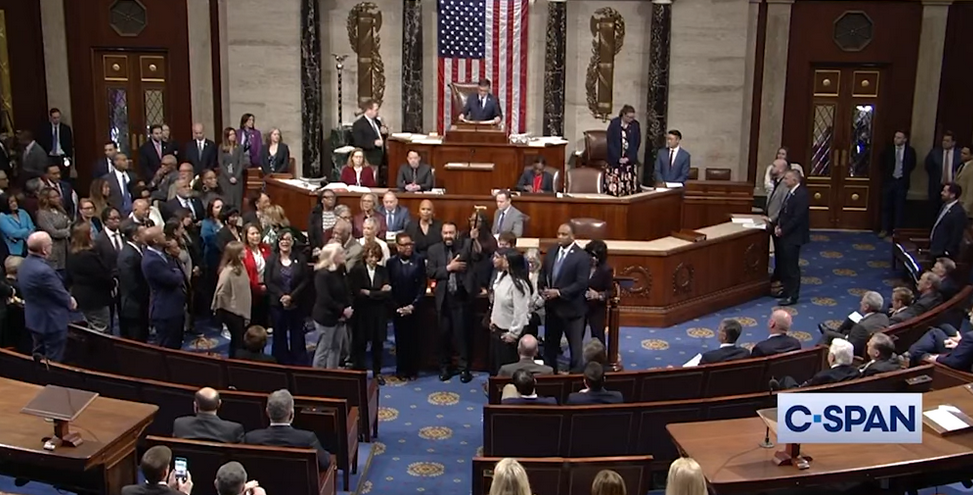Photos: YouTube Screenshots
Race has always been a salient dilemma for the American society. Scholars, politicians, and laypersons alike continue to analyze race and racism. Sometimes, we bypass consideration of race and focus on racism and how to halt it. But to purge racism from society, one must fully comprehend its root causes.

At BlackEconomics.org, we have long held that the media is a key culprit. We have highlighted persistently media’s role in promulgating adverse stereotypical images of Black Americans, which we contend help fuel racism and the related consequences.[1]
This Report Brief continues our efforts to shed light on the pivotal role of media as a cause of racism. After analyzing the nation’s leading newspapers (The New York Times and The Washington Post), and a newspaper from one of the nation’s most cosmopolitan and racially and ethnically diverse cities (Honolulu’s Star Advertiser), we consider a “liberal” midwestern city often ranked in the
top 10 of places to live in the nation ( New York Times and The Washington Post), , and a newspaper from one of the nation’s most cosmopolitan and racially and ethnically diverse cities
(Honolulu’s Star Advertiser), we consider a “liberal” midwestern city often ranked in the top 10 of places to live in the nation (Madison’s Wisconsin State Journal (WSJ)).[2]
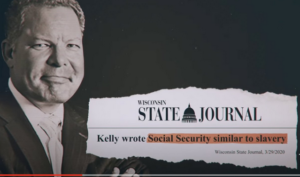
Our purpose is to measure the prevalence of Black American adverse stereotypical images in the WSJ, and then to reemphasize the link between such images and racist behavior.
Data for the analysis in this Report Brief are from 31 editions of the WSJ during July 2023. We simply reviewed each page of the paper, observed all photographs/images, and assessed each photograph/image that included Black Americans. Each image is considered even if it is duplicative of subjects on the same page. As in other analyses, we adopted this approach to identify stereotypical images because “a picture paints a thousand words.” Also, many newspaper readers scan the pages quickly and only stop to read when an image or headline attracts their attention.
Once an image is observed and captured in readers’ minds, then related existing perceptions of the subjects or objects in the image are associated and reinforced or countervailed. If images of Black Americans are perceived as stereotypical (for non-Blacks or Blacks), then the images are likely to reinforce negative impressions of Black Americans and may serve as an impetus for racist behavior(s) (an expression of racism) against Black Americans (see Figure 1).
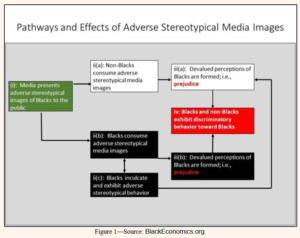
To avoid bias in classifying Black American images in the WSJ, we adopted a shorthand approach that classified images featuring Black Americans in any of the following contexts as stereotypical: Persons engaged in sports; musicians and other performers in entertainment industries; persons involved in crime or criminal activity and/or the related prevention thereof; and persons engaged in
religious practices. These contexts are known widely as “spaces” where Black Americans are accepted and are expected to inhabit.
They are “adverse” in the sense that our commonplaceness in these contexts serves to limit/restrict others’ expectations and perceptions about acceptable Black American roles and behavior, and they can motivate a denial of “permission” to occupy or inhabit other spaces. Also, this commonplaceness of Black Americans in these contexts reinforces our “successful” performance in them, and it limits our interest in existing and performing in other, potentially, more important areas. Otherwise subjects in images were classified as astereotypical/neutral.
Notably, we only observed images that featured Black Americans prominently, and disregarded images that reflected Black Americans in distant backgrounds as part of long-range camera shots. In most cases, we reviewed image captions to confirm our classifications, and even considered story headlines for this purpose. Given the nature of photographs, we captured certain Latinx persons with dark skin as Black. However, we purposely excluded images of Blacks or Middle Easterners with a Black phenotype when the caption or headline clearly placed the setting outside of the US.
The foregoing is intended to indicate that we postured at a non-Black American vantage point for the classification process. That is, we believe that a substantial proportion of non-Blacks have come to devalue, to some extent, the importance of sports, entertainment, crime, and even religious roles in maintaining and sustaining the US social system. This devaluation of Black Americans’ roles in society potentially motivates prejudices, discrimination, and the follow-on racism.
It is important to note that, in the case of WSJ readership in and around Madison, Wisconsin, the city is predominantly White (76.1 percent of the population), with Blacks comprising just 6.8 percent of the population.[3] Given the small Black American population, most Whites have few opportunities to form close associations with Black Americans and to observe our humanity as a disconfirmation of media stereotypes.
Unfortunately, because of the prevalence of Black American stereotypical images in media broadly, Black Americans often inculcate stereotypes, exhibit stereotypical behavior, and reinforce the
stereotype and resulting prejudices and discrimination.
Results
Table 1 (below) presents our analytical results. Line 13 of the table indicates that 340 images were observed. Rows 6-12, which cover the breadth of newspaper sections (news, sports, entertainment, advertisements, commentaries, comics/cartoons, or games), show that 224 of the images were stereotypical in nature, while 116 were astereotypical/neutral.
In other words, stereotypical images were presented twice as often as astereotypical/neutral images. Rows 1-3 concern the gender reflected in images; males reflected a 3-to-1 advantage over
females. There is a near balance in stereotypical versus astereotypical/neutral images presented of females, but male images are heavily stereotypical—nearly 3-to-1. Considering the right most column of rows 6-12, the WSJ “newspaper” reflects a heavy emphasis on sports images of Black Americans—all of which (by definition) are stereotypical—followed by news, advertisements, and entertainment images (rows 14-18 are confirming).
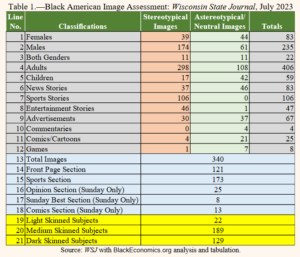
We sought to shed light on the role of “colorism” in image portrayals by attempting to classify image subjects as light, medium, or dark skinned. Admittedly these classifications were difficult due to the vagaries of camera exposures and to the extent to which “black and white” versus “color” images can be used to discern skin tone accurately. We place the related statistic in “yellow” to indicate that they should be viewed and interpreted with caution. Assuming that we were at least somewhat successful in identifying skin tones, Table 1 shows that about 94 percent of the images involved medium and dark-skinned subjects (these two skin tones were difficult to differentiate). The remaining 6 percent were classified as light skinned.
Notably, all but 3 of the 22 light-skinned images were classified as stereotypical (this statistic is not discernible from Table 1). The latter outcome is inconsistent with general thinking about the role of skin tone and social status; with light skinned Black Americans being perceived as having favorable opportunities to occupy astereotypical/neutral roles. Again, we advise readers to view these statistics on skin tone with caution.
Conclusion
Compared with BlackEconomics.org’s previous efforts to classify Black American images in TNYT and TWP (twice) and the Star Advertiser, classification of Black American images in the WSJ produced substantially different results. Our previous efforts found that the share of stereotypical images of Black Americans was small for Honolulu’s Star Advertiser and slightly exceeded the share of astereotypical/neutral images for TNYT and TWP.
However, in the case of the WSJ, a large majority of images were stereotypical. This is attributable in a significant way to the WSJ’s emphasis on sports. Madison is certainly a college/university town that is relatively small with a wide variety of athletic programs. Also, there are nearby professional football, basketball, and baseball teams—not to mention school and community athletic competition. Therefore, it is reasonable to expect to encounter a heavy emphasis on sports in the local newspaper; especially because there is a limited range of other local news to convey daily.
The heavily weighted stereotypical results found for WSJ images is driven by the fact that all sports-related and almost all entertainment-related images were classified as stereotypical, and because there were only slightly more astereotypical/neutral than stereotypical news-related and advertisement-related images. While it might be expected that news-related images would
reflect more stereotypical than astereotypical/neutral images (local news often emphasizes crime and Blacks are overrepresented in crime), the reverse would be typically expected for advertisements.[4]
BlackEconomics.org’s past research concluded that advertisers are expected to appeal favorably to prospective customers; this may best be achieved by not featuring Black Americans in stereotypical roles.[5]
One might rationalize these results by concluding that, although Madison reflects Black American faces in “high” places, the city’s historically small Black population is insufficient to sensitize the broader population, including those responsible for producing the WSJ, to the outcomes identified in this analysis and to motivate more balanced images of Black Americans in the newspaper. Consequently, a steady diet (on average, 10 per day) of stereotypical images of Black Americans in the press promulgates a non-virtuous circle of media stereotypes, stereotypical behavior, prejudice
formation and racism, and more media stereotypes.
The biases and stereotypes inherent in the WSJ are signaled forcefully by the observed gender imbalance: Black males appear much more frequently than Black females in the newspaper. The related racism that is produced by these stereotypical images is on bright display in the following three cases in point: (1) The statistics highlighted in footnote 4; (2) the UW-Madison’s failure to ever increase Black American student enrollment beyond 3 percent (Black Americans represent 7 percent of Wisconsin’s population);[6] and (3) a spring 2023 protests by UW-Madison Black
students following a racist social media rant by a UW-Madison student.[7]
Given this Report Brief, Madison’s population, the UW-Madison, and the WSJ can no longer contend that they do not have a reasonable understanding of at least one important reason why racism persists in Madison, and at least one fundamental action that can be executed to reduce prejudice formation and its attendant racism.
Dr. Brooks Robinson is the founder of the BlackEconomics.org website.
References:
[1] 1 Consider the following selected examples: “Addressing Racist Media Stereotypes,” “Is the Media a Problem for Black America? – Part II,” and “Black Unemployment and Infotainment.”
[2] “TNYT and TWP: Persistent Enemies of Black America,” “TNYT and TWP: Enemies of Black America,” and “Does Your Local Newspaper Present a Preponderance of Biased Black American Images?”
[3] See US Census Bureau QuickFacts; https://www.census.gov/quickfacts/fact/table/US/PST 045222 (Ret. 081523).
[4] It is instructive to note that the 2022 Annual Report of the Madison Police Department indicates that 40 percent of adult and 68 percent of juvenile arrests were of Black Americans; https://www.cityofmadison.com/police/documents/annualReport2022.pdf (Ret. 081623).
[5] See Brooks Robinson (unpublished manuscript), Chapter Three: “Representativeness and Role Evaluation: Part I,” Black American and the Media: An Economic Perspective; https://www.blackeconomics.org/BEMedia/chapterthree.pdf (Ret. 081623).
[6] Devi Shastri (2022), “UW-Madison’s Black Student Enrollment Has Never Exceeded 3%. Why Does the School Make So Little Progress, Decade After Decade?” Milwaukee Journal Sentinel (June 5); https://www.jsonline.com/story/news/education/2022/06/02/university-wisconsin-madison-struggles-recruit-black-students/7171091001/ (Ret. 081623).
[7] Kimberly Wethal (2023), “UW-Madison Students Demand Expulsion for Student Who Made Racist Video,” Wisconsin State Journal (May 3, 2023); https://madison.com/news/local/education/university/uw-madison-students-demand-expulsion-for-student-who-made-racist-video/article_6a841a1d-ed53-51b5-a792-f1727e92b5b4.html (Ret. 081623).
